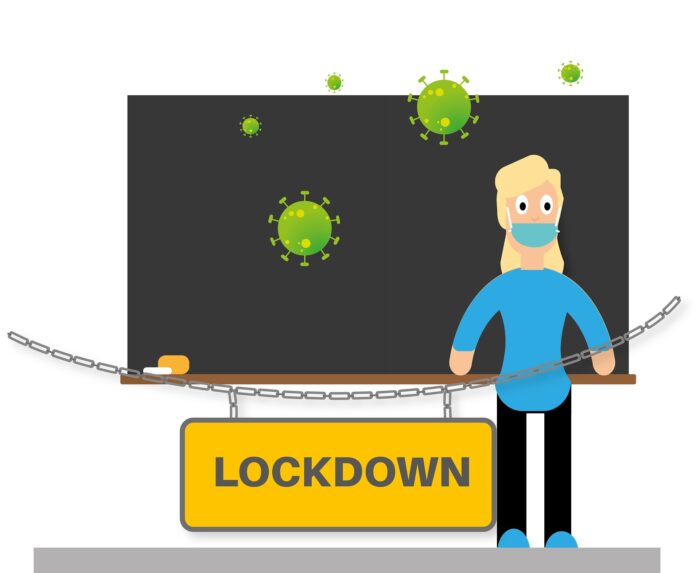Bloom’s Taxonomy is a learning framework which was originally developed in 1956, and it has been applied widely by educationists in developing teaching and learning methodologies and has evolved dynamically over the course. Bloom’s Taxonomy broadly categorizes human learning into six hierarchical levels: Remember, Understand, Apply, Analyze, Evaluate, and Create. From elementary learning to advanced specialized learning, Bloom’s Taxonomy proves to be useful for all phases and types of learning.
Domains of Human Learning

Learning is a continuous process through which humans acquire knowledge and develop skills or behavior. It begins from a simple, elementary level, and grows in terms of complexity. Learning does not have an abrupt beginning or end. Bloom’s Taxonomy is an attempt to arrange the knowledge and skills acquired through continuous learning in a hierarchical order, ranging from simpler to complex skills.
Humans learn through three distinct modes – thoughts, emotions, and actions. Each of these modes enables a human being to acquire/develop a certain kind of ability. Thoughts help humans develop abilities such as memorizing, reasoning, etc. Emotions help develop abilities such as motivation, appreciation, enthusiasm, etc. Actions help develop abilities such as hand-eye coordination, typing, playing an instrument, etc. In simple words, humans learn through thinking, feeling, or doing, or through a combination of these. The set of skills acquired through a particular mode constitutes a “domain”. Thus, there are three domains of learning, one domain corresponding to each mode of learning. These are the cognitive domain (thoughts/thinking), affective domain (feeling/emotions), and psychomotor domain (actions). The table in figure 1 summarizes the different domains, their corresponding modes, and examples of abilities acquired through each of these modes.
Readers may access a more detailed definition of learning at the webpage What is learning at the Queen’s University, Canada website. More information on domains of learning and instruction is available in Unit -1 titled Differentiating Between Psychomotor, Cognitive, and Affective Domains of Instruction at the KNILT website.
What is Bloom’s Taxonomy?

The skills that constitute a domain may range from simple to complex in nature. A scheme of classification (taxonomy) helps arrange the skills in a hierarchical manner. Each domain of human learning has its own hierarchy of skills. Simple skills are at a lower level and complex skills are at a higher level of the hierarchy. The skills at the lower level of the hierarchy are a prerequisite to developing skills at a higher level. The figure 2 presented here depicts the hierarchy of skills in the cognitive domain. This taxonomy (a hierarchical classification) of human skills was developed in 1956 by Prof. Benjamin S. Bloom, who was the Associate Director of the Board of Examinations at the University of Chicago. The taxonomy is a result of his work at understanding how educators evaluate a student’s performance at examinations.
Readers may go through the article Bloom’s Taxonomy on the Open Colleges, Australia website.
The Development of Bloom’s Taxonomy

Prof. Bloom discovered that the objective of an academic exercise (lesson, examination, etc) was a matter of subjective inference amongst educators and teachers. This led to a variation in the outcomes that learners achieved by the end of an academic exercise. Thus, Prof. Bloom along with his graduate students set upon the task of developing a framework that could standardize the objectives of academic exercises. This framework also established uniformity and standardization in terms of learning outcomes that are expected to be achieved by the end of an academic exercise. In addition, it helped academics avoid making redundant efforts which lead to the same academic outcomes ultimately.
Formal education today, however, has developed more around the process of thinking rather than the processes of emotions or actions. It is thus the cognitive domain in Bloom’s taxonomy that has been very widely adopted in formal education. The taxonomy of cognitive skills was detailed in 1956, that of affective skills in 1964, and that of psychomotor skills in the 1970s.
Figure 3 depicts each level in the hierarchy of cognitive skills along with some unique action verbs associated with each level. These action verbs outline the different kinds of academic exercises and activities recommended for developing skills of different levels in Bloom’s taxonomy.
Application of Bloom’s Taxonomy

Bloom’s taxonomy intends to promote higher-order thinking rather than rote learning amongst learners. Unique action verbs are associated with each level in this taxonomy. These verbs are useful for developing observable and measurable objectives for an academic exercise. The table in figure 4 presents a few objectives employing the appropriate action verbs for different levels of Bloom’s Taxonomy.
More examples of writing learning outcomes using Bloom’s Taxonomy are available on the webpage Writing Learning Outcomes Using Bloom’s Revised Taxonomy at the University of Toronto website. A similar effort with action verbs can be undertaken to develop questions for an assessment. The webpage A Guide to Bloom’s Taxonomy at The Innovative Instructor Blog, Johns Hopkins University offers guidance on writing test questions and course learning objectives using Blooms Taxonomy.
Bloom’s taxonomy proves useful as a guide to design foundation and advanced courses as well. A foundation course may have academic content developed around lower-order cognitive levels. An advanced course on the other hand may focus on higher-order cognitive skills. Thus, Blooms taxonomy is useful in defining and developing academic exercises to focus on a particular cognitive skill level. This, in turn, ensures that the learning outcomes are uniform and standardized across a spectrum of learners.
Advanced Bloom’s Taxonomy

The taxonomy presented in this article is the revised Bloom’s Taxonomy, published in the year 2001. Figure 5 shows the original taxonomy, published in the year 1956. A careful comparison between the two taxonomies given in figure 2 (revised) and figure 5 (original) shows that there is a change in the order of the top two cognitive skills. The taxonomy changed following the flow of the human learning process: humans conduct an evaluation before creating something. In addition, the new taxonomy has a separate and distinct taxonomy of the types of knowledge used in cognition. This separate knowledge taxonomy is presented below in brief.
- Factual Knowledge
- Conceptual Knowledge
- Procedural Knowledge
- Metacognitive Knowledge
The articles Bloom’s Taxonomy at the Vanderbilt University website and Three Domains of Learning-Cognitive, Affective, Psychomotor at the The Second Principle webpage provide a detailed comparison of the Original and Revised Blooms Taxonomy.
Additional Reference:
- The discussion: What is the importance of Bloom’s Taxonomy for the assessment and the strategies of Cognitive Learning? at reserachgate.net.
Image Credits:
Icon made by Freepik, geotatah from www.flaticon.com, and Vectorstock.
For further reading related to pedagogy and education standards, please visit the blog pages at Evelyn Learning. Create.Engage.Inspire

















